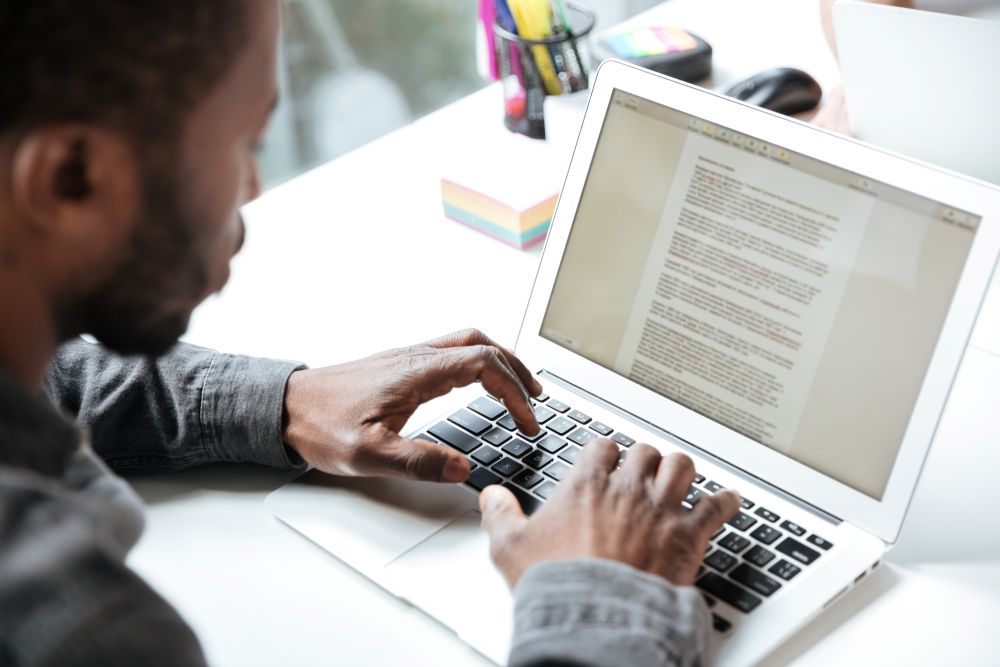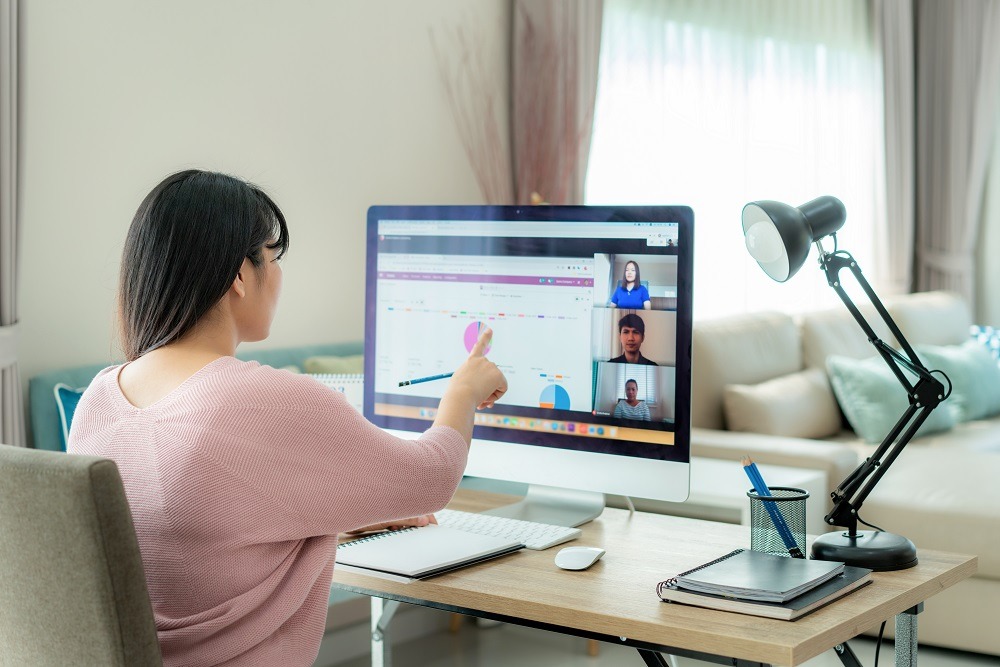In today’s workplace and educational environments, accessibility has moved from a side note to a central expectation. Organizations now recognize that accessibility is about creating spaces where everyone can participate fully, not just meeting legal requirements.
When we think of accessibility in media, most of us picture captions or subtitles. These tools are crucial for people who are Deaf or hard of hearing, but they don’t address the needs of people who are Deafblind—those who experience both hearing and vision loss. That’s where descriptive transcripts come in.
What Makes a Transcript “Descriptive”
The difference between a basic transcript and a descriptive transcript comes down to context and completeness.
A descriptive transcript is more than just a record of spoken words. It captures non-verbal audio cues, speaker tone, background sounds, and visual context in text form. For people who are Deafblind, descriptive transcripts are a primary accessibility tool because they can be read through a refreshable braille display connected to a screen reader for example, making video and audio content accessible when neither sound nor visuals are usable.
The benefits extend to others, as well:
- Blind and low-vision audiences gain access to descriptions of visuals
- Neurodiverse learners can reread and process at their own pace
- People learning another language can reinforce vocabulary and comprehension
- Organizations improve discoverability, since search engines index transcripts
How to Create a Descriptive Transcript
The good news is that creating descriptive transcripts doesn’t have to be overwhelming. With a clear workflow, the process is repeatable, scalable, and can be adapted to different types of content.
Basic Steps
- Start with a standard transcript. Transcribe dialogue text using human or automated processes.
- Add non-verbal details. Describe sounds, music, and visuals, including on-screen text.
- Write for braille output. In your descriptions, use clear, concise language that provides the essential details the audience needs to understand what is going on, without describing everything in the scene. For example, write “A woman stands behind a podium with a microphone on it,” rather than “A woman with brown hair and glasses on the top of her head stands behind a podium with a long, flexible microphone on it.”
- Review for completeness. Ensure nothing essential is missing, such as a sound that occurs off screen.
Organizations can outsource this work or build in-house expertise. The key is remembering that you are writing primarily for Deafblind audiences, while also providing value to others.
Note on Different Access Methods for Deafblind Users
Not all Deafblind people use braille. Some rely on large print, text to speech technology, tactile sign language, or Protactile, depending on their residual vision or hearing. Descriptive transcripts are still vital because they create a flexible text record that can be adapted into whichever communication format works best for the individual.
Descriptive Transcripts in Action
Here’s an extract from a descriptive transcript for a presentation our Founder and President Céline Imbaud gave at the 2025 GALA conference titled “AI Won’t Save Your Business… Have You Tried Being Human?”.
Descriptive Transcript Extract
Opening scene: Upbeat music begins.
A woman stands behind a podium with a microphone on it. Behind her is a large screen with this text:
GALA 2025 Montreal
The Language of Business
The Business of Language
13-15 April 2025
Céline: “Being authentic and vulnerable, that is a good sign of good leadership. Contrary to what you may think, it is not weakness.”
Visual: Subtitle text appears on the screen in large white letters. Each word is highlighted in purple as Céline says it.
Céline: “It is power.”
Visual: The subtitle text appears larger on screen.
Visual: The video fades lighter and turns monochrome with a purple tint. The title text “Gala 2025 Conference” appears on screen over the video.
Visual: New text appears on screen:
Soapbox Session
“AI Won’t Save Your Business… Have you Tried Being Human?”
Céline Imbaud, Founder & CEO of ITC Global
Visual: On the left side of the video, a woman wearing a white shirt and holding a microphone stands at the front of a conference room. She is wearing a large nametag on a lanyard with the name Cassandra. On the right side of the video, another woman wearing an orange striped shirt is standing behind a podium with a microphone on it.
The music fades out.
Cassandra: “Let me introduce you our next speaker, Céline Imbaud.”
Visual: The camera pans to the woman behind the podium and zooms in on her.
Technology and Innovation in Descriptive Transcripts
The tools available for creating and delivering descriptive transcripts are evolving quickly, and that’s good news for organizations looking to expand accessibility. While technology doesn’t solve every challenge, it has made transcripts faster to produce, easier to share, and more adaptable to different users’ needs.
One of the most important innovations is the refreshable braille display. These small electronic devices connect to a computer, tablet, or phone and translate on-screen text into tactile braille in real time. For Deafblind users who rely on braille, descriptive transcripts can be fed through a screen reader into the display, allowing them to follow along line by line. This gives individuals more independence when accessing training videos, meetings, or public announcements.
AI-powered transcription tools are another area of progress. These platforms can generate a rough transcript of spoken content within minutes. While these tools don’t automatically include the descriptive detail needed for full accessibility, they give human editors a useful starting point. This hybrid model—automation plus expert review—can save organizations time and resources while still meeting accessibility requirements.
There are also advances in cross-platform delivery. Descriptive transcripts can now be embedded directly into learning management systems, corporate intranets, or video players. Some organizations provide them as downloadable text files on external video sharing sites like YouTube, while others make them accessible through secure portals. This flexibility means users can choose how they want to consume content—whether on a braille display, through magnified on-screen text, or with the help of tactile sign interpreters.
Compliance and Responsibility
Accessibility is both a commitment to equity and a legal requirement, and descriptive transcripts play a critical role in meeting both, providing equivalent access for Deafblind users.
In the United States:
- The ADA requires equal communication access for people with disabilities in both public and private settings. For individuals who are Deafblind, this often means providing auxiliary aids and services such as descriptive transcripts.
- Section 504 of the Rehabilitation Act of 1973 extends this to federally funded programs. Section 504 applies to programs and activities that receive federal funding, such as schools, universities, public health services, and community programs. It requires equal access for individuals with disabilities, including Deafblind people.
- WCAG is the international benchmark for digital accessibility. The WCAG 2.1 guidelines specifically recommend descriptive transcripts as a text alternative for audio and video content. While WCAG is not law everywhere, it is referenced in many regulations and used as a standard in accessibility audits.
- In education, the Individuals with Disabilities Education Act (IDEA) ensures that students with disabilities have access to learning on an equal basis.
- The Twenty-First Century Communications and Video Accessibility Act (CVAA) extends accessibility requirements to modern communications and video technology.
Want to create descriptive transcripts for your videos?
Providing descriptive transcripts sends a clear message to the Deafblind community and other members of your audience that they are seen, valued, and included.
Ready to get started? Contact ITC Global today or explore all our accessibility solutions.


